Highlights from Wildlife Photographer of the Year 2019
Life and death moments from the best wildlife photographs of 2019.
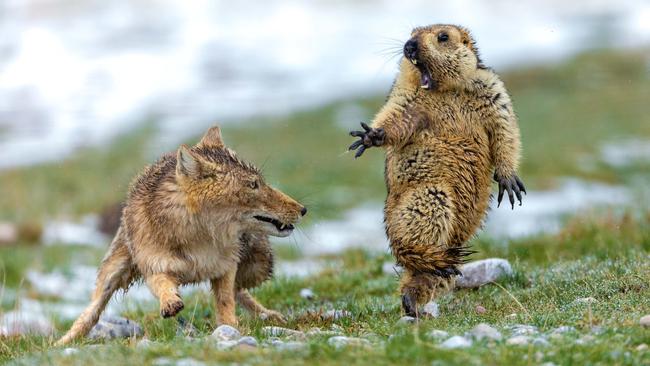
The Wildlife Photographer of the Year exhibition is at the National Maritime Museum, Sydney, Mar 6 to Oct 11; visit sea.museum
-
The Moment by Yongqing Bao, China (above)
Grand title winner
This Himalayan marmot was not long out of hibernation when it was surprised by a mother Tibetan fox with three hungry cubs to feed. With lightning-fast reactions, Yongqing captured the attack – the power of the predator, the terror of her prey, the intensity of the moment written on their faces. Himalayan marmots spend more than six months a year hibernating in an exceptionally deep burrow with the rest of their colony. When they resurface in spring, it’s an opportunity not to be missed by hungry predators.
-
Last Gasp by Adrian Hirschi, Switzerland
Highly Commended
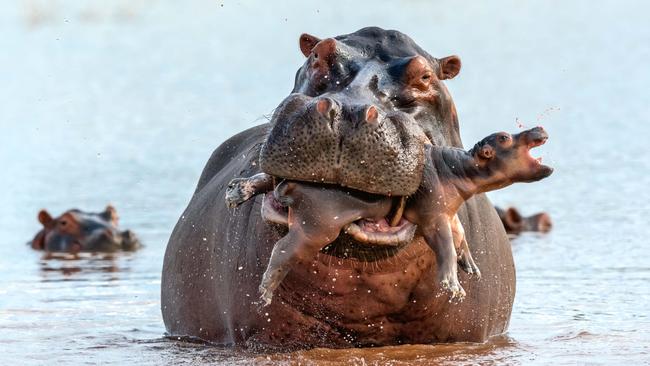
A baby hippo, just days old, was keeping close to its mother when this bull hippo suddenly chased the mother away and went after the calf, seizing it in his huge gape, clearly intent on killing it. “All the while, the distraught mother looked on helplessly,” says Hirschi. Infanticide among hippos is rare; it usually occurs when they travel beyond their territory and mix with new groups. There’s a biological logic to the behaviour: by killing the young that aren’t his, a male can bring females into oestrus, ready to mate with him.
-
Station squabble by Sam Rowley, UK
Winner, People’s Choice Award
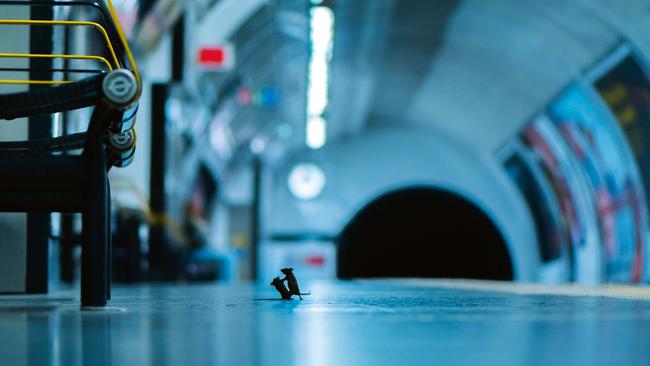
Rowley discovered the best way to photograph the mice inhabiting London’s Underground was to simply lie on the platform and wait. He saw them fight over scraps of food dropped by passengers a few times; this fight lasted a split second before one grabbed a crumb and dashed off.
-
War Dance by Victor Tyakht, Russia
Highly Commended
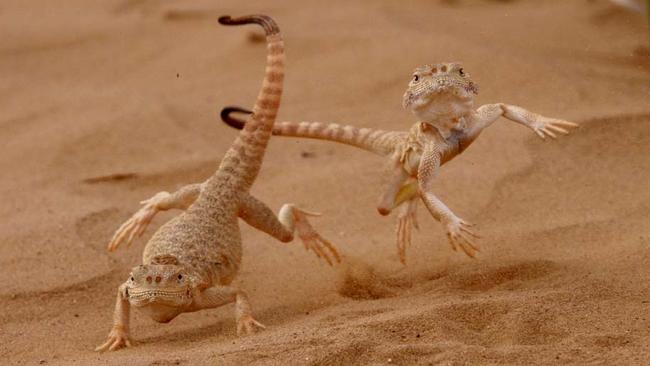
Two toad-headed agamas – a desert lizard from the Middle East – run and jump alongside one another in a competitive display. Toad-headed agamas are extremely territorial. “The conflict escalated very quickly in the searing heat, the air full of burning sand blown up from the dunes,” says Tyakht.
-
Bee Line by Frank Deschandol, France
Highly Commended
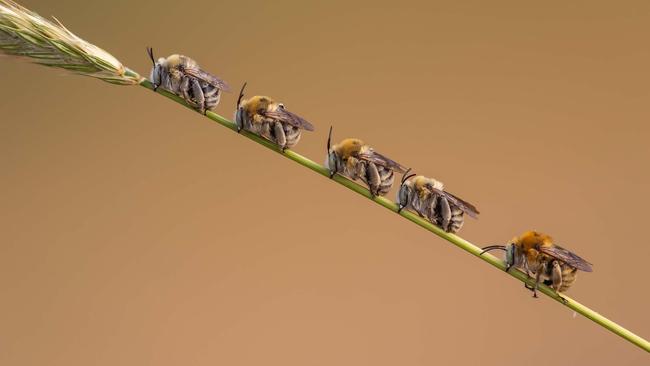
These solitary bees had the same idea when it came to finding a suitable spot – a grass stem – on which to spend the night. Holding on tight with their jaw-like mandibles, they gradually relaxed – their wings still, their antennae drooping – until they fell asleep.
-
Colliding Views by Justin Gilligan, Australia
Highly Commended, Wildlife Photojournalism
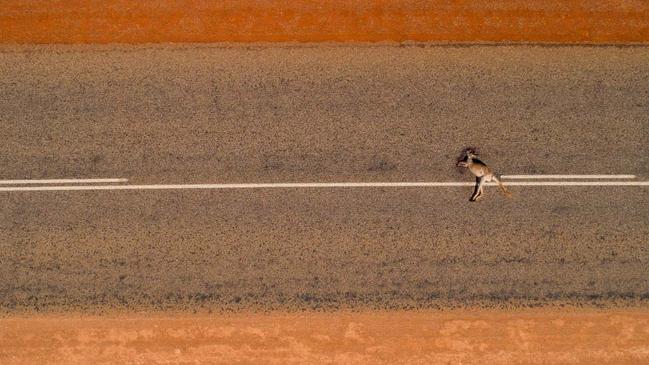
Driving past this dead ’roo on an outback road, Gilligan noticed how it was framed by the orange dust of its natural environment and positioned as though suspended in mid-leap. He used a drone to capture this graphic image.
-
The Garden of Eels by David Doubilet, USA
Winner, Under Water
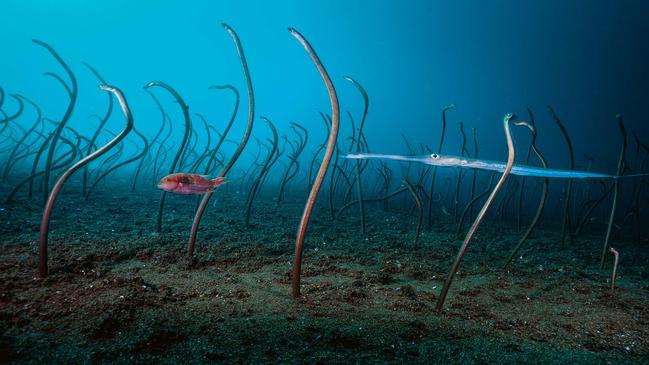
A swaying colony of garden eels – pictured half in, half out of their burrows – retreated fully into the seabed as soon as Doubilet arrived at this scene in the Philippines. So as not to disturb them again, he set up his camera and hid behind a shipwreck where he could trigger the system remotely. It was several hours before the eels re-emerged to feed on plankton drifting in the current, undisturbed by a passing wrasse and cornetfish.


To join the conversation, please log in. Don't have an account? Register
Join the conversation, you are commenting as Logout